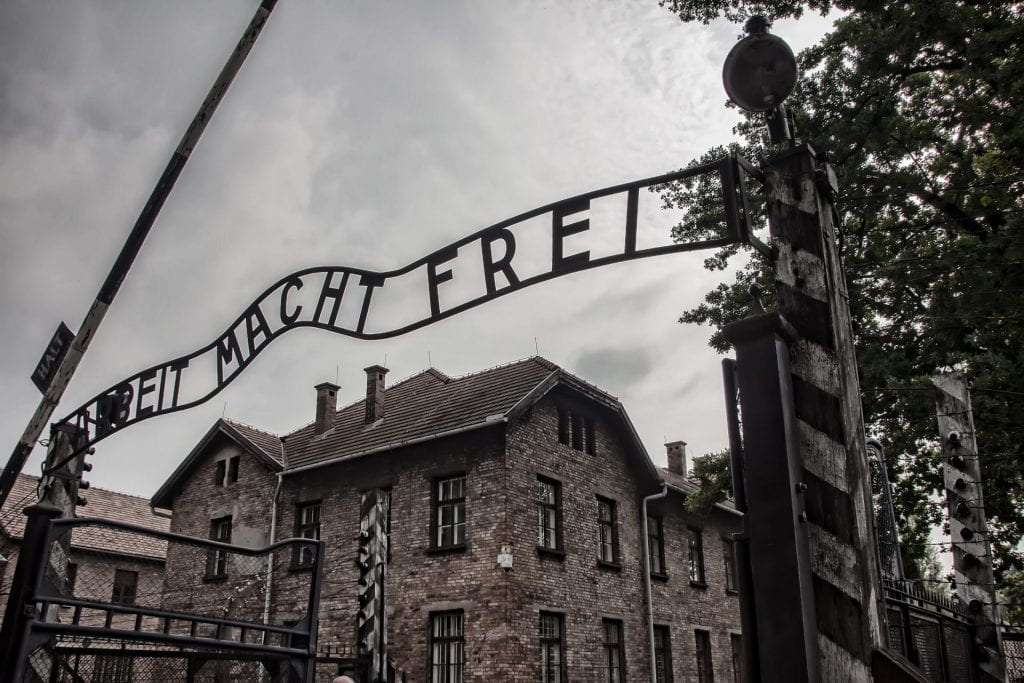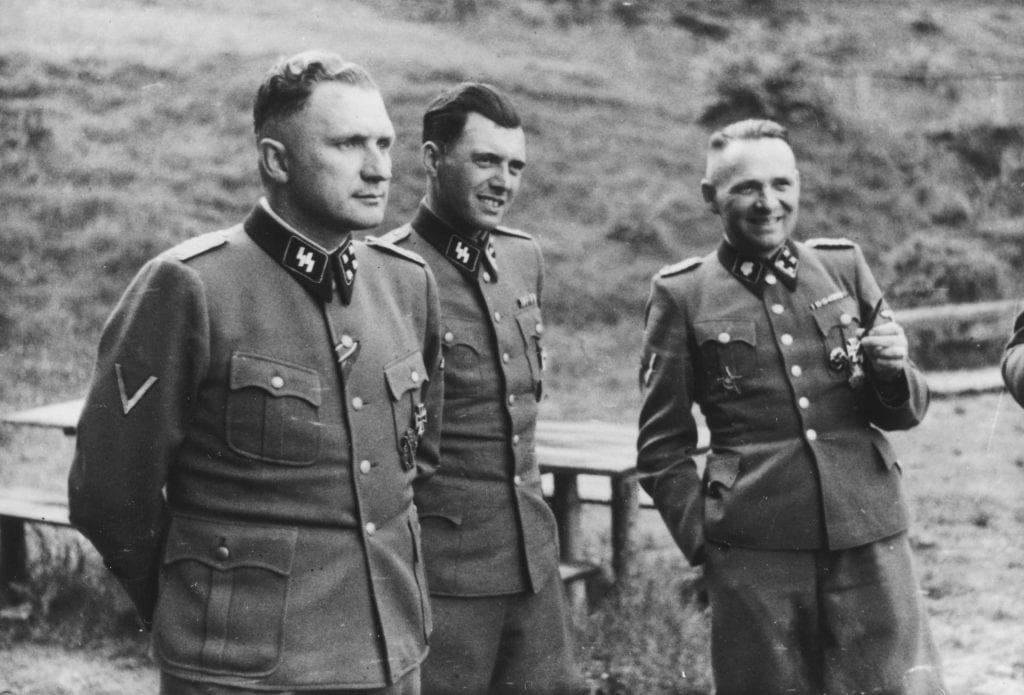
In an effort to remain accountable to communities who have been negatively impacted by past and present medical injustices, the staff at Himmelfarb Library is committed to the work of maintaining an anti-discriminatory practice. We will uplift and highlight diverse stories throughout the year, and not shy away from difficult conversations necessary for health sciences education. To help fulfill this mission, today's blog post honors International Holocaust Remembrance Day.
January 27th is International Holocaust Remembrance Day. This day is meant to serve as a time to honor and commemorate the victims of the Nazi regime, and to promote education about the Holocaust. On January 27, 1945, Auschwitz was liberated by the Soviet army. Auschwitz, located in German-occupied Poland, was the largest of the the Nazi concentration camps and the place where 1.1 million people lost their lives during the Holocaust (USHMM, n.d.).
Medical Experiments in the Holocaust
Medicine played a role in the dark history of Auschwitz. SS physicians conducted a variety of medical experiments on prisoners at Auschwitz. These experiments were conducted without the consent of the prisoners and were often painful, and even deadly. The results from these experiments are overwhelmingly rejected today due to “inhumane conditions, lack of consent, and questionable research standards” (USHMM, n.d.). Nazi experiments focused on three main areas of interest: survival of military personnel, drug and treatment testing, and advancement of Nazi racial ideological goals.
Experiments aimed to improve the survival of military personnel included “high-altitude experiments to determine the maximum altitude from which crews of damaged aircraft could parachute safely,” “freezing experiments'' to develop hypothermia treatments, and testing ways of “making seawater drinkable” (USHMM, n,d). Drug and treatment experiments used prisoners to test immunization and antibodies intended to prevent and treat contagious diseases “including malaria, typhus, tuberculosis, typhoid fever, yellow fever and infectious hepatitis” (USHMM, n.d.). Bone grafting experiments left prisoners disfigured. Prisoners were exposed to phosgene and mustard gas so antidotes could be tested. Experiments aimed at advancing Nazi racial and ideological goals were intented to establish “Jewish racial inferiority” (USHMM, n.d.). These experiments were often deadly for prisoners. Even when a prisoner survived the experiment, they were often put to death afterwards “in order to facilitate post-mortem examination” (USHMM, n.d.).
Josef Mengele: The Angel of Death
The most well known Nazi doctor, who conducted many of these horrendous experiements at Auschwitz, was Josef Mengele. After joining the Nazi Party in 1937, Mangele received his medical degree and joined the SS a year later, in 1938. Mengele arrived at Auschwitz in May of 1943, and in November of that same year became the Chief Camp Physician of Auschwitz II (Birkenau) (USHMM, n.d.).

Auschwitz medical staff were required to be present when new prisoners arrived to the camp as part of their “rounds,” during which time they made “selections” of prisoners to determine who would be put to work doing hard labor, and who would be sent directly to the gas chambers (USHMM, n.d.). Because he often spent his “off-duty” time at the ramp on the lookout for twins, his research area of interest, Mengele is a “pervasive image” among survivor accounts of the ramp (USHMM, n.d.). He is known as the “Angel of Death” due to “his coldly cruel demeanor” while on selection duty on the ramp (USHMM, n.d.).
In the following video, Eva Kor, a twin who experienced the horrors of Nazi experimentation first hand, recounts her experience with Mengele:
Jewish medical professionals who were prisoners at Auschwitz were forced to carry out the details of many of the experiments that happened there. Dr. Miklos Nyiszli, a prisoner-physician who “assisted Mengele under duress,” later documented his experience in his book Auschwitz: A Doctor’s Eyewitness Account.
While Mengele’s crimes were well documented, he evaded punishment for these crimes by moving from Argentina to Paraguay to Brazil, where he died in 1979. To learn more about Mengele, read Halioua and Marmor’s 2020 article The eyes of the angel of death: Ophthalmic experiments of Josef Mengele.
Jewish Physicians and the Holocaust:
While the actions of Nazi doctors during the Holocaust were overwhelmingly horrifying and atrocious, there were doctors during this time who made the choice to practice medicine in a way that offered hope and was intended to save lives whenever possible. In the 2014 book Jewish Medical Resistance in the Holocaust, Dr. Michael Grodin highlights the “mostly unknown moral and physical struggles faced by physicians trying to provide care and comfort amid the depredation of war” (Saunders, 2014). As documented by primary and secondary source materials in this book, Jewish physicians “fought to promote public health in ghettos and concentration camps as a way of slowing the march toward extermination” (Saunders, 2014). To hear more about this book and Jewish doctors during the Holocaust, take a look at the short video below:

One Jewish physician who was a prisoner at Auschwitz and was forced to work with Dr. Mengele was Dr. Gisella Perl, pictured on the left as a young medical student. Dr. Perl was a gynecologist who lived in Hungary with her husband, Ephraim Krauss, a surgeon, and their two children. In March of 1944, Perl and her family were sent to Sighet Ghetto. By March of 1945, she had been moved to Auschwitz. Perl, alongside four other doctors and five nurses, were tasked with establishing a hospital in the camp.
In addition to gynecology, Perl found herself “trying to heal all of the forms of abuse inflicted on her fellow prisoners” including caring for head wounds, extracting infected teeth, taping broken ribs, and cleaning painful lacerations (Gross, 2020). Having had her medical bag ripped away by a German doctor, she had no equipment with which to perform these duties aside from “paper for bandaging and a small knife she sharpened on a stone” (Gross, 2020).
Even in the midst of such dire circumstances, Perl made every effort to use her position as a doctor in the camp for good and to save as many lives as she could. When asked to provide blood samples for prisoners who she knew had contagious diseases, she sent vials of her own blood instead so the patients would not be killed because of their disease (Gross, 2020). “On days she knew the SS would clear out the hospital and send the sick to the gas chambers,” she would send some patients “back to their barracks so they would be spared” (Gross, 2020). One Auschwitz survivor called Perl “the doctor of the Jews” (Gross, 2020).
Mengele, having learned that Perl was a gynecologist, ordered her to report every pregnant woman directly to him, telling her that “they would be sent to a special camp, where they would receive extra bread rations and even milk” (Gross, 2020). However, Perl soon learned the truth when she witnessed pregnant women being beaten, attacked by dogs, and thrown into the crematorium alive (Gross, 2020). Perl decided that “it was up to me to save the life of the mothers, if there was no other way, than by destroying the life of their unborn children” (Gross, 2020). When Perl knew that a woman was pregnant, she did her best to hide the pregnancy whenever possible, and she ended the pregnancy when it could no longer be hidden (Gross, 2020). She spent her days working for Mengele, and her nights performing abortions in an effort to save the lives of the mothers.
Perl survived the Holocaust. She went on to work in labor and delivery at Mount Sinai Hospital in Manhattan before opening her own practice “dedicated to helping women with infertility” (Gross, 2020). In 1978, she learned that her daughter had also survived and was living in Israel. She moved to Israel to live with her daughter and grandson and volunteered her services at gynecology clinics delivering babies until her death in 1988 (Gross, 2020).
Nuremberg Code
Following the Holocaust, medical professionals were tried for war crimes and crimes against humanity during the “doctors trial” portion of the Nuremberg Military Tribunal case of United States v. Karl Brandt et al. During the trial, issues of medical ethics brought up by the medical experiments performed on prisoners took center stage. What is now known as the “Nuremberg Code” was established from this trial. The Nuremberg Code established 10 key ethical principles to be followed for all medical experimentation including: voluntary patient consent, avoidance of unnecessary physical and mental suffering and injury, the degree of risk should never exceed the importance of the problem solved by the experiment, human subjects should be able to end the experiment when physical or mental continuation seems impossible, and that scientist should be prepared to end the experiment at any stage (Shuster, 1997). The Nuremberg Code is widely considered to be the “most important document in the history of the ethics of medical research” and continues to guide the “principles that ensure the rights of subjects in medical research” to this day (Shuster, 1997).
Additional Resources:
To learn more about medical care and Jewish physician experiences during the Holocaust, explore the United States Holocaust Memorial Museum’s Medical Care, Nazism, and the Holocaust Collection. This collection includes diary entries, oral histories and interviews, photographs, official letters and manuscripts.
References:
Boston University. (2012, February 18). A history of Jewish doctors during the Holocaust. Boston University YouTube Channel. https://youtu.be/LI6qcshy-Kc
Gross, R.E. (2020). Dr. Gisella Perl: The Auschwitz doctor who saved lives. BBC Future. https://www.bbc.com/future/article/20200526-dr-gisella-perl-the-auschwitz-doctor-who-saved-lives
Saunders, M. (2014). New book details scope of Jewish medical resistance during the Holocaust. Boston University School of Public Health. https://www.bu.edu/sph/news/articles/2014/new-book-by-michael-grodin-details-scope-of-jewish-medical-resistance-during-the-holocaust/
Shuster E. (1997). Fifty years later: the significance of the Nuremberg Code. The New England journal of medicine, 337(20), 1436–1440. https://doi.org/10.1056/NEJM199711133372006 Retrieved from https://proxygw.wrlc.org/login?url=https://www.nejm.org/doi/full/10.1056/nejm199711133372006
United States Holocaust Memorial Museum. (n.d.) United States Holocaust Memorial Museum Website. https://www.ushmm.org/
USC Shoah Foundation. (2015, May 26). Eva Kor on her experience with Josef Mengele. USC Shoah Foundation YouTube Channel. https://youtu.be/bB1_UCFd7xs


